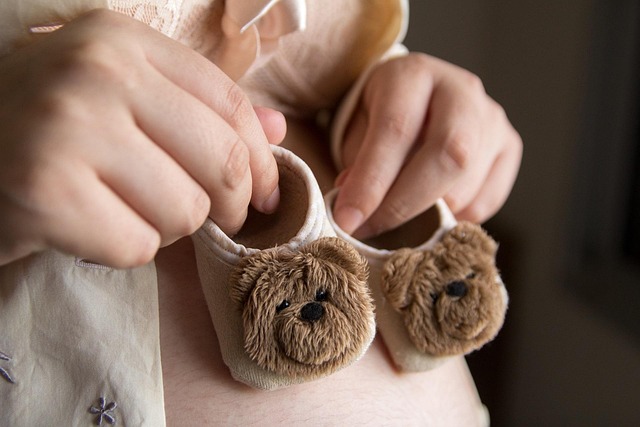When my partner and I took our childbirth class, we dismissed the section on C-sections. We were determined to have a traditional, pain-managed vaginal delivery, so we thought that would be the end of it. Fast forward to three exhausting hours of pushing with my epidural fading, and suddenly, my doctor was advising me that a C-section was necessary. As it turned out, we hadn’t prepared for that scenario, but the medical team took charge, and my partner played the role of the astonished dad with little guidance while I played the part of “I Think I Can Still Feel That.”
Though the unexpected surgery went smoothly for both me and my baby, the recovery was tougher than I anticipated. If you’ve experienced a C-section, you understand the agony of that first post-surgery shower, the challenges of healing from major surgery, and navigating the emotional rollercoaster of postpartum life while caring for a newborn. Many women hope to avoid that route again if possible. If you’re considering a vaginal birth after cesarean (VBAC), here are four key things to keep in mind.
1. Expect Resistance to Your VBAC Plans
From the moment I learned I could potentially have a VBAC, I faced skepticism. My regular OB-GYN at my six-week postpartum check-up insisted that I should schedule another C-section for my next delivery. I accepted her word without question, thinking she was the expert. It wasn’t until I consulted a different doctor for an annual exam that I discovered my options. He informed me that since there wasn’t a specific medical reason for my first C-section, pursuing a VBAC was indeed possible. This revelation made me eager to proceed.
However, that support was short-lived. After switching hospitals due to my original one not offering VBACs, I encountered a new doctor or midwife at each appointment, all of whom reiterated the same cautionary tale: “VBACs come with risks. Are you sure a C-section isn’t a better option?” Even during my labor, while I was focusing on breathing through contractions, I was still being presented with the option of a C-section. If a VBAC matters to you, communicate that clearly to your partner and medical team, and be prepared to advocate for yourself.
2. Your Success Rate is Influenced by Unpredictable Factors
When assessing your chances of a successful VBAC, medical professionals take into account your anatomy and the reason behind your previous C-section. However, they also utilize a hospital calculator that considers seemingly unrelated factors like your age, body mass index, and even race. For example, statistics show that white women have a higher success rate compared to Hispanic women—a puzzling fact without a clear explanation.
Initially, doctors estimated my odds of achieving a VBAC at about 34 percent, likely thinking that would dissuade me. To their surprise, when they used the calculator, my actual odds were closer to 53 percent. Statistics can provide insights into trends, but they can’t predict your unique experience. Consider the calculator as one resource among many as you make your decisions.
3. Expect a Different Recovery Experience
This may seem obvious, but if your only experience has been a C-section, the recovery from a VBAC can feel like uncharted territory. After my C-section, which took place at noon, I couldn’t get out of bed until the following morning because of the lingering effects of the epidural. When I finally did manage to move, it was a painful shuffle to the shower, where my partner helped me clean off surgical tape residue. Climbing into a regular tub was impossible, so they placed me in a handicapped room with a walk-in shower.
In stark contrast, after my VBAC, I walked from the delivery room to my recovery room within two hours of giving birth. There was no catheter, no narcotics causing discomfort, and no fear of sharp pain from a cough or laugh. I kept looking at my partner in disbelief, saying, “I can’t believe how great I feel!” While every recovery is unique, generally, healing from a VBAC is much different than recovering from surgery because, well, it isn’t surgery.
4. You’ll Feel a Sense of Accomplishment
You might think I’m overreacting, but my VBAC stands as one of my proudest achievements, right alongside earning my college degree. After nine months of hearing reasons against attempting a VBAC, I felt a deep sense of pride for having pursued it. I often pictured sending “you were wrong” letters to each doctor and nurse who suggested I should opt for surgery instead.
Of course, a VBAC isn’t the right choice for everyone. I’m not a medical professional, nor do I encourage anyone to make this decision without consulting their doctor. I’m just a mom who wanted to welcome my child on my own terms and wants to inspire other moms to know they can too.
For more resources on navigating pregnancy and home insemination, check out this excellent guide from Hopkins Medicine’s Fertility Center. If you’re exploring self-insemination, consider the BabyMaker Home Intracervical Insemination Syringe Kit Combo or the BabyMaker At-Home Insemination Kit for a supportive journey ahead.
In summary, while pursuing a VBAC can be met with skepticism, understanding your options, the factors influencing success, the nature of recovery, and the pride of accomplishment can empower you to make informed choices for your birth experience.
Keyphrase: VBAC information
Tags: [“home insemination kit”, “home insemination syringe”, “self insemination”]
